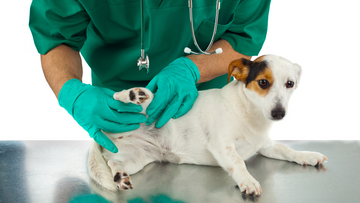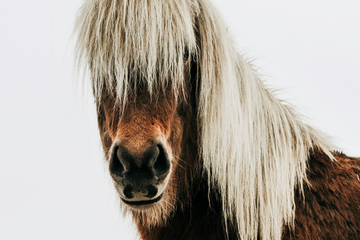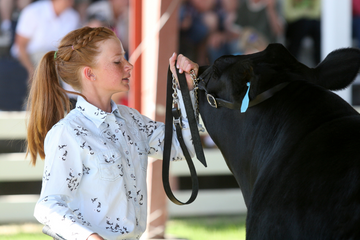A "Bowed tendon" is a common name for tendinitis in the superficial or deep digital flexor tendons. This is a term for a horse that has sustained an injury that caused the tendon fibers to be torn, resulting in a "bowed" appearance. After this injury heals, it is possible for the tendon to have a permanent "bowed" appearance. Although the swelling is usually in the middle of the cannon bone, it may be behind the knee, at the ankle, or it may extend from the knee down to the pastern.
 Tip: A tendon is often confused with a ligament. A tendon's function is to move muscles or structures; a ligament's function is to hold bone structures together.
Tip: A tendon is often confused with a ligament. A tendon's function is to move muscles or structures; a ligament's function is to hold bone structures together.
Bowed tendons can occur because of chronic stress on the flexor tendons or as a result of a single traumatic incident. Race horses, polo ponies, and jumpers are at higher risk than other equine athletes for developing this condition. Complete healing usually takes a long time and a healed tendon is also less elastic, leaving the tendon vulnerable to re-injury.
Symptoms of Bowed Tendons:
- Inflammation of the tendon
- Pain in the area
- Heat
- Lameness
- A bowed appearance of the tendon area
Causes of Bowed tendons:
- Ruptured tendon
- Pulled or Strained Tendon
- Inability of the tendon to heal properly
- Working on unleveled land
- Overworking the horse
Treatment of the Bowed Tendon:
The goal of treatment within the first 48 hours should be to control the inflammatory reaction within the tissues.
- Immediate application of ice or cold therapy; this will constrict the blood vessels and slow tissue hemorrhage.
- Cold water pressure bandages to provide counter pressure against tissue swelling.
- Remove shoes and lower the heels to help straighten the fetlock joint, therefore decreasing the excursion of the superficial digital flexor tendon.
- Apply a topical for swelling.
- Use low level light therapy to stimulate blood flow.
- Massage and stretch to aid in circulation of the tissues.
Treatment also consists of complete rest following by a controlled, gradual return to exercise, anti-inflammatory drugs, and in some cases surgery. Standing bandages are also very helpful, but be sure to avoid wrapping them too tight and constricting blood flow.
If you have a horse with tendinitis or a bowed tendon, you definitely want to incorporate
Benefab® and
Sore No-More® products into your rehab regimen. A set of
Therapeutic Polo Wraps or
Therapeutic VersiWraps would be extremely beneficial in aiding the healing process. They're infused with a patented bio-ceramic thread that works by stimulating blood circulation. This in turn dilates capillaries and increases oxygen flow to the muscles, causing the muscles, tendons, and ligaments in the area to relax, all while helping to heal the injury. For best results, pair with Sore No-More's
liniment,
gelotion, or
poultice of your choice - your horse will surely appreciate the extra relief!
 Tip: A tendon is often confused with a ligament. A tendon's function is to move muscles or structures; a ligament's function is to hold bone structures together.
Bowed tendons can occur because of chronic stress on the flexor tendons or as a result of a single traumatic incident. Race horses, polo ponies, and jumpers are at higher risk than other equine athletes for developing this condition. Complete healing usually takes a long time and a healed tendon is also less elastic, leaving the tendon vulnerable to re-injury.
Symptoms of Bowed Tendons:
Tip: A tendon is often confused with a ligament. A tendon's function is to move muscles or structures; a ligament's function is to hold bone structures together.
Bowed tendons can occur because of chronic stress on the flexor tendons or as a result of a single traumatic incident. Race horses, polo ponies, and jumpers are at higher risk than other equine athletes for developing this condition. Complete healing usually takes a long time and a healed tendon is also less elastic, leaving the tendon vulnerable to re-injury.
Symptoms of Bowed Tendons:






















